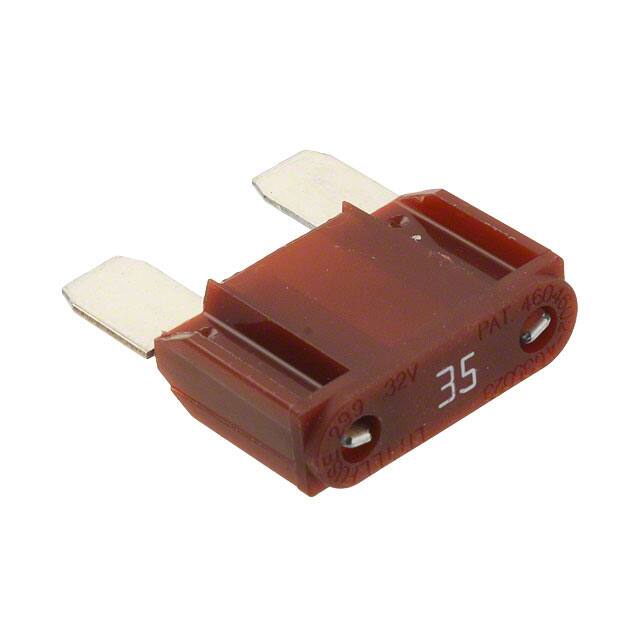Szczegóły produktu można znaleźć w specyfikacjach.

MAX-35: Product Overview and Specifications
Introduction
MAX-35 is a versatile electronic component that belongs to the category of voltage regulators. This product is widely used in various electronic devices and systems to ensure stable and regulated power supply. In this entry, we will provide an overview of MAX-35, including its basic information, specifications, pin configuration, functional features, advantages and disadvantages, working principles, application field plans, and alternative models.
Basic Information Overview
- Category: Voltage Regulator
- Use: Ensuring stable and regulated power supply in electronic devices and systems
- Characteristics: High efficiency, low dropout voltage, thermal shutdown protection
- Package: TO-220, TO-252, TO-263
- Essence: Regulating input voltage to a constant output voltage
- Packaging/Quantity: Available in tape and reel packaging with varying quantities
Specifications
- Input Voltage Range: 4V to 28V
- Output Voltage Range: 1.25V to 26V
- Output Current: Up to 3.5A
- Dropout Voltage: 300mV at 3.5A
- Operating Temperature Range: -40°C to 125°C
- Line Regulation: 0.02% per volt
- Load Regulation: 0.1% per ampere
Detailed Pin Configuration
The MAX-35 voltage regulator has a standard pin configuration with input, output, and ground pins. The pinout is as follows: - Pin 1: Input Voltage (VIN) - Pin 2: Ground (GND) - Pin 3: Output Voltage (VOUT)
Functional Features
- High Efficiency: Provides efficient power conversion, minimizing energy loss
- Low Dropout Voltage: Ensures stable output even when the input voltage is close to the output voltage
- Thermal Shutdown Protection: Protects the regulator from overheating, enhancing reliability
Advantages and Disadvantages
Advantages
- Reliable and stable voltage regulation
- Wide input voltage range
- Thermal protection for enhanced safety
Disadvantages
- Higher cost compared to traditional linear regulators
- Sensitive to external noise and fluctuations
Working Principles
MAX-35 operates based on the principle of feedback control. It compares the output voltage to a reference voltage and adjusts the internal circuitry to maintain a constant output voltage despite variations in the input voltage and load conditions.
Detailed Application Field Plans
MAX-35 finds extensive applications in various electronic systems, including: - Power supplies for industrial equipment - Automotive electronics - Battery charging circuits - Audio amplifiers - LED lighting systems
Detailed and Complete Alternative Models
Several alternative models to MAX-35 are available in the market, offering similar functionality and performance. Some notable alternatives include: - LM317: A popular adjustable linear voltage regulator - LT1083: High-current positive voltage regulator - LM2940: Low dropout voltage regulator
In conclusion, MAX-35 is a reliable and efficient voltage regulator with a wide range of applications in diverse electronic systems. Its high efficiency, thermal protection, and stable output make it a preferred choice for designers seeking robust power supply solutions.
Word Count: 489
Wymień 10 typowych pytań i odpowiedzi związanych z zastosowaniem MAX-35 w rozwiązaniach technicznych
What is MAX-35?
- MAX-35 is a high-performance alloy known for its exceptional strength and corrosion resistance, commonly used in technical solutions.
What are the key properties of MAX-35?
- MAX-35 exhibits high tensile strength, excellent resistance to corrosion and oxidation, and good thermal stability.
In what technical applications is MAX-35 commonly used?
- MAX-35 is frequently utilized in aerospace components, chemical processing equipment, marine hardware, and high-stress structural applications.
How does MAX-35 compare to other alloys in terms of performance?
- MAX-35 offers superior strength and corrosion resistance compared to many other alloys, making it a preferred choice for demanding technical solutions.
Can MAX-35 be welded or machined easily?
- MAX-35 can be welded and machined with proper techniques and tools, but it may require specialized processes due to its high strength and hardness.
What are the temperature limits for MAX-35 in technical applications?
- MAX-35 can withstand temperatures ranging from -200°C to 600°C, making it suitable for use in both cryogenic and high-temperature environments.
Does MAX-35 require any special surface treatments or coatings?
- While MAX-35 has inherent corrosion resistance, certain applications may benefit from additional surface treatments or coatings to enhance its performance in specific environments.
Is MAX-35 cost-effective for technical solutions?
- Despite being a premium alloy, MAX-35's long-term durability and performance often justify its initial investment in technical applications.
Are there any limitations or considerations when using MAX-35 in technical solutions?
- Designers and engineers should consider the potential for work hardening during machining and the need for specialized equipment when working with MAX-35.
What are some best practices for handling and storing MAX-35 materials?
- MAX-35 should be stored in a dry environment to prevent corrosion, and care should be taken to avoid damage to its surfaces during handling and transportation.

